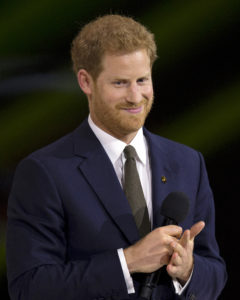Being or being associated with a celebrity philanthropist has both advantages and drawbacks when attracting attention to social causes
Celebrities as magnets
Although there is no shortage of cynics who categorically dismiss celebrities as only in it for the publicity, or having no impact on social causes whatsoever, I have been fascinated by celebrity activists and philanthropists ever since I witnessed their enormous convening power. Whenever I’ve struggled to get people to attend a philanthropy event, I have learned that getting a boldface name celebrity to show up often works wonders in getting other people to do so.

Leonardo Di Caprio Foundation gala raised $40 million in one night. Photo: Leonardo Di Caprio Foundation.
Film stars, musicians, athletes, authors, artists and members of royalty play a powerful role in shaping public opinion and behaviour, and having watched their movies, attended their concerts, read their books or followed their tweets are not prerequisites to being cast under their social and cultural spell. When they lend their name to a cause and do so with sincerity, people pay attention. As Angelina Jolie once said, ‘People take my calls.’
I’ve witnessed how their power often translates into success in fundraising as well. For instance, Sean Penn’s charity gala this year raised $3.5 million for Haiti; last year’s Leonardo DiCaprio Foundation gala in St Tropez raised $40 million in one night; the Elton John Aids Foundation has raised more than $400 million for HIV prevention, treatment and advocacy worldwide. Some of the effects are more qualitative, such as the apparent reduction of stigma attached to causes that celebrities have embraced, like HIV/Aids, gay rights and, more recently, mental health.
Celebrity philanthropy’s challenges
Despite its proven effectiveness, the field of celebrity philanthropy faces great challenges. In conversations I’ve had with founders and senior staff of foundations of public figures, these are a few of the common refrains:
- Now that celebrity activists are ubiquitous, how can we establish credibility amid the public’s growing cynicism?
- How does a celebrity-led charity navigate the jungle of civil society given how many other non-profits actually want to partner with us and have us lend our names to a cause?
- How can we work with entrepreneurs, brands and for-profits – particularly those whose products celebrities endorse – in order to raise funds or use business for social good?
- How can we achieve scale and do this without being over-dependent on the celebrity?
- How can we encourage more celebrities and public figures to be philanthropic despite the fact their moves will always be under great public scrutiny?
What aggravates these issues is that both formal and informal collaboration and coordination among celebrity-led organisations are rare, in some cases virtually non-existent. So how can celebrity charities learn from each other’s successes and failures, and collaborate with each other to gain more leverage where it matters? It became obvious to me that the first step was to get them to meet each other.
The convening
I undertook to bring together senior leaders of foundations of modern-day celebrities. The occasion took place at the Rockefeller Foundation’s Bellagio Center in April 2019. Among those who attended were the heads of the Royal Foundation of the Duke and Duchess of Sussex and the Duke and Duchess of Cambridge[1], the Queen Rania Foundation, the CAA (Creative Artists Agency) Foundation, the Elton John Aids Foundation, the Charlize Theron Project for Africa, the TriBeCa Film Institute, the Galileo Foundation (of the Pope) and the Barefoot Foundation (of Colombian pop star Shakira). Here are some of the lessons gathered from our discussions.
As more public figures share their experience of controversial or stigmatised issues, incredible shifts start to happen.
Setting up a foundation – or not? The first thing the celebrity needs to ask themselves is whether they want to set up a foundation at all. A foundation offers great control in defining its mission, making grants, developing programmes and choosing who sits on its board. However, it also requires great time, expertise and expense in running it. Unless the celebrity is putting in a significant amount of their own money (at least $1 million) and not simply raising funds from other sources, it is better to simply collaborate with an existing organisation whose focus matches their passion.
Skin in the game: Donors don’t always react favourably when they find out that a celebrity has merely lent their name to a cause and not made actual contributions. If a celebrity foundation is aiming to attract ultra high net worth individuals as funders or board members, the celebrity must be transparent about what amounts they have actually contributed. They may not necessarily have the same levels of wealth, but if Mr Oscar Winner wants Ms Billionaire to support his cause, Mr Oscar Winner must have some financial skin in the game as well.
Hiring the right people: A common practice among celebrity foundations is to assign foundation responsibilities to well-intended friends, relatives and managers who are trusted members of the celebrity’s inner circle. Running an effective foundation requires technical skill and experience that may require more specialised staff and advisers. If a celebrity decides to set up a foundation, it is essential to bring on people with the right expertise – and empower them to deliver.
Balancing advocacy and action: Raising awareness for important causes is important, and is a role that a celebrity can play especially well thanks to their fame. However, to deepen their understanding of the issue and address any doubts as to their credibility, any advocacy work must be backed up by concrete action and involvement on the ground. Being in touch with the communities that philanthropists serve also helps them actually gain a sense of fulfilment from their charitable efforts.
Cultivation: Major gifts officers and other professional fundraisers know that it sometimes takes years of careful cultivation for a gift to come to fruition. Celebrities may have great convening power that gets people to show up, but this is not enough. Celebrity foundations must know the importance of relationship building with past, present and future donors. Stewardship, as opposed to entitlement, is key.
Just as important as using one’s head, it’s the heart that makes the public, donors and policymakers want to connect with the celebrity.
Continuity and legacy: Athletes, film stars, musicians and models may be famous one moment and forgotten the next, and even among the most enduring stars continuity is a real challenge. Everyone wants to leave a legacy and, for the sake of the beneficiaries who depend on the celebrity’s foundation, having a succession plan is crucial. This does not necessarily mean that the foundation is to exist in perpetuity. ‘Sunsetting’ – or adopting spend-down deadlines and provisions to close down by a specific date – can make more sense for certain foundations and spur them to make more of an impact in the short term.
Stigma: Celebrities face the same risks of discrimination and stigmatisation as others do. Actors risk being denied parts, getting blacklisted from events, or disappointing fans, and the risk of shame and rejection can be too high for many. But as more public figures share their experience of controversial or stigmatised issues (like Prince Harry revealing his personal mental health battles), incredible shifts start to happen. The public begins to see that celebrities are more like us than we imagined, and we in turn feel less fearful about opening up about our own challenges. Similar shifts happen when celebrities interact with marginalised groups – such as when a gloveless Princess Diana shook hands with people afflicted with HIV/Aids.
Galas and fundraising events: While events can be very effective tools for fundraising, the CEO of a well-known celebrity foundation that has staged numerous multi-million dollar events warns: ‘When a celebrity’s event becomes so popular and glitzy, the risk is that they can lead you down a cul-de-sac… Because they are so shiny, they get tons of press, but then that becomes the only thing your organisation gets known for. And they are so much work.’ Keep in mind that bigger events are not necessarily the most effective ones in terms of fundraising and awareness raising.
Celebrity foundations must be explicit about what they need each partner to deliver, and also be clear about what the partner can expect from them.
Using the celebrity’s unique assets: There are many benefits to having a coordinated approach within a celebrity’s whole team. For example, when a celebrity lands a commercial endorsement deal, the manager can make sure there is a clause that stipulates a percentage of the deal goes to the celebrity’s foundation. This is often a win-win for the celebrity and the endorsed brand, especially these days when companies understand the value of having a social purpose.
Using one’s head and one’s heart: The celebrity foundation must know its landscape, find a niche within it, and do it really well. This means having a clear strategy and learning to say no to initiatives that do not align with one’s focus area. Just as important as using one’s head, it’s the heart that makes the public, donors and policymakers want to connect with the celebrity. But if the head can’t back the heart, the celebrity is in a vulnerable position.
Forming partnerships: One of the key advantages of being a celebrity foundation is that there is no shortage of organisations who want to partner with you. The difficulty lies, however, in finding out who is legitimate and who is only in it for the publicity value and the chance to hobnob with the rich and famous. Celebrity foundations must be explicit about what they need each partner to deliver, and also be clear about what the partner can expect from them.
There are a number of potential advantages to, or opportunities for, partnering with celebrity foundations or activists: partner with a celebrity activist in support of a stigmatised or neglected issue; fund or host a collaborative of celebrity activists to help strengthen and professionalise the sector; go beyond photo opportunities; get to know celebrity activists and the unique challenges of their organisation; when approached for funding, question celebrity foundations about the intended use of the funds; and lend expertise and encourage collaboration, not competition.
Celebrity philanthropy is a niche area that can either be dismissed for its perceived superficiality or revered without proper context. But as these lessons from Bellagio show us, great things can happen when stars align.
To tips for philanthropy-celebrity co-operation:
- Partner in support of a stigmatized or neglected issue.
- Fund or host a collaborative of celebrity activists to help strengthen and professionalize the sector.
- Go beyond photo ops. Get to know celebrity activists and the unique challenges of their organization.
- When approached for funding, question celebrity foundations about the intended use of the funds.
- Lend expertise and encourage collaboration, not competition.
Jenny Santi is founder of Saint Partners.
Email: js@jennysanti.com
Twitter: @jennysanti
Footnotes
- ^ The Bellagio convening was held before the Duke and Duchess of Sussex decided to establish their own new charitable foundation.








Comments (0)